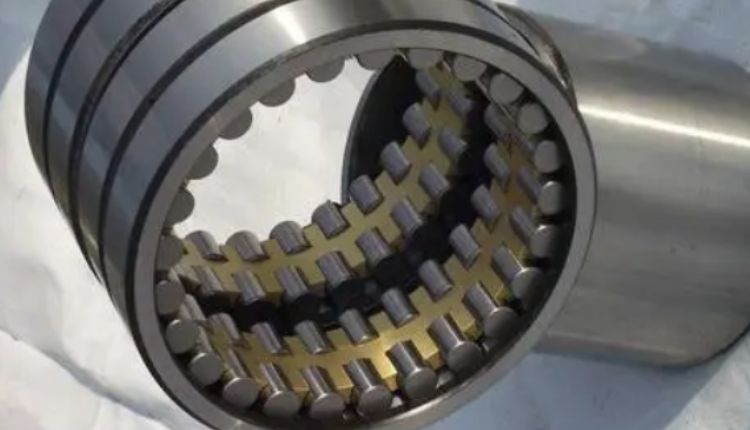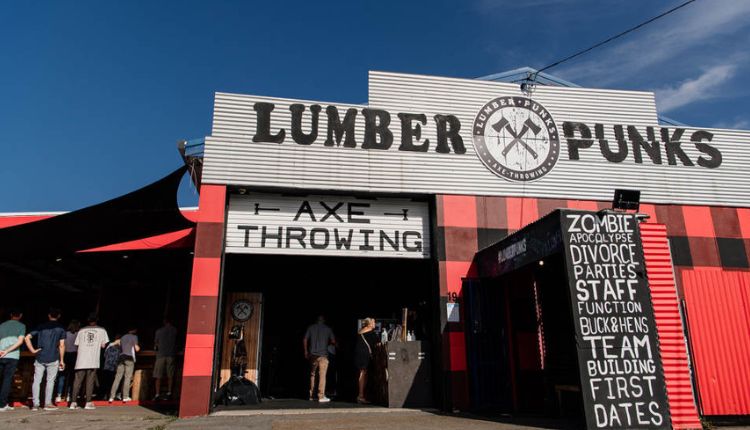
Rolling Mill Bearing Lubrication, Installation And Maintenance
Rolling mill bearing lubrication
Lubrication method
In principle, the lubrication of the roll bearing is basically the same as that of other rolling bearings, but the working conditions of the roll bearing are relatively poor, and whether its working performance can be effectively exerted depends largely on the lubrication of the bearing.
The lubrication methods used for roll bearings mainly include grease lubrication and oil lubrication.
Grease-lubricated grease has both sealing function, simple sealing structure and lubricating facilities, and it is convenient to replenish grease. Therefore, as long as the working conditions allow, roll bearings are generally lubricated with grease. Oil lubrication has a strong cooling effect and removes dirt and moisture from the bearing. The oil-lubricated lubrication methods for roller bearings include pressure oil-supply lubrication, oil-spray lubrication, oil-mist lubrication and oil-air lubrication.
Pressure oil lubrication is the most effective way to lubricate roll bearings at normal speeds. Oil injection lubrication is to inject lubricating oil into the bearing at a certain pressure through the oil injection nozzle installed on one side of the bearing for lubrication. It is generally used in high-speed roller bearings, or where pressure oil supply lubrication cannot meet the cooling requirements.
Spray lubrication is to spray dry compressed air containing oil mist into the bearing for lubrication. The amount of oil used is small. Due to the action of the air, the cooling effect is extremely strong. It is mainly used for large roll bearings with high rolling speed and high rolling precision. Or for roll bearings that are not frequently disassembled in the bearing housing.
Both pressure oil supply lubrication and oil injection lubrication need to install inlet and outlet pipes, lubrication pumps, oil reservoirs, and sometimes lubricating oil coolers. Therefore, the cost is high, and generally roll bearings are rarely used.
1. The importance of lubrication
The lubrication of the bearing is to use the oil film to separate the relative moving rolling surfaces from each other, so as not to fail due to excessive wear caused by rough point contact. If users can attach great importance to bearing lubrication technology, they can ensure stable performance and rotation accuracy during the predetermined working life.
2. Types and properties of grease
The lubrication of rolling mill bearings is divided into grease lubrication and oil lubrication. The advantages of grease lubrication are that the lubrication facilities are simple, the grease is not easy to leak, and it has a certain ability to prevent water, gas and other impurities from entering the bearing. Therefore, grease lubrication is widely used in general. Lubricate with oil under heavy load, high speed, high temperature and other working conditions.
Grease is composed of base oil, thickener and additives. The viscosity of the base oil plays an important role in the lubricating performance of the grease. The composition of the thickener has an important influence on the performance of the grease, especially the temperature characteristics, water resistance, oil separation, etc. The additives are mainly used to enhance the anti-gasification of the grease. , rust, extreme pressure and other properties.
Greases are classified according to the types of thickeners, such as lithium-based and nano-based. Lithium-based grease is commonly used in rolling mill bearings. Lithium-based grease is characterized by good water resistance and high dropping point, and can be used in wet and mechanical parts in contact with water. Grease is divided into several grades according to its fluidity, that is, penetration. The higher the penetration value, the softer the grease.
Roll bearing grease produced in China is a multi-component lithium complex grease compounded by high-grade grease acid-proof and synergist. It is also suitable for the lubrication of rolling mill bearings.
3. Grease filling amount
The filling amount of lubricating grease should be one-third and one-half of the space between the bearing and the bearing housing. It should only be filled to a third or less at high speed. When the rotational speed is very low, in order to prevent external foreign matter from entering the bearing, the housing space can be filled.
4. Grease replacement
The service life of lubricating grease is limited, its lubricating performance gradually decreases during use, and the wear also increases gradually, so it must be supplemented and replaced every certain time.
The replenishment period of the grease is related to the structure, speed, temperature and environment of the bearing, and should be determined according to the specific working conditions of the enterprise. When replacing grease, it should be noted that greases of different grades cannot be mixed, and the mixing of greases containing different types of thickeners will destroy the structure and consistency of lubrication. After the grease has been completely removed, add new grease.
Rolling mill bearing installation
The service life of rolling mill bearings is not only related to the quality of the bearing, but also closely related to its installation and use. To this end, attention should be paid to the technical requirements of bearing installation, and the relevant operating procedures should be followed.
1. Preparation before installation
(1) Before installation, carefully check the mating surfaces of the roll neck, bearing box, bearing ring and bearing box cover to check whether the size, shape and position accuracy and matching tolerance meet the technical requirements of the design.
(2) The edges and burrs of the roller neck, the bearing box hole and the oil hole must be removed from the surface matched with the bearing, and cleaned and coated with lubricating oil.
2. Four-row tapered roller bearing installation
The fit between the inner ring of the four-row tapered roller bearing and the roll neck is generally with a gap. When installing, first put the bearing into the bearing box, and then put the bearing box into the journal. The outer ring of the four-row tapered roller bearing also adopts a dynamic fit with the bearing housing hole, and the outer ring A is installed into the bearing housing first.
Character symbols are printed on the outer ring, inner ring and inner and outer spacer rings when leaving the factory, and must be installed in the bearing housing in the order of the characters and symbols during installation. Can not be interchanged arbitrarily to prevent the change of bearing clearance.
After all parts are installed in the bearing housing, the inner ring and the inner spacer, and the outer ring and the outer spacer are axially abutted. Measure the width of the gap between the end face of the outer ring and the bearing housing cover to determine the thickness of the corresponding gasket.
(1) Install the labyrinth ring (waterproof cover)
The cooperation between the labyrinth ring and the roll neck is generally a tight dynamic fit, and a copper rod needs to be gently tapped in during installation. The two sides of the labyrinth ring must be parallel and fit tightly against the shoulder of the shaft and the inner ring of the bearing.
(2) Install the inner ring
The fit between the inner ring and the roll neck of the four-row cylindrical roller bearing is an interference fit, and the inner ring should be heated to 90-100 ℃ before installation. Do not exceed 120 °C to prevent incomplete retraction of the inner ring after cooling. The heating method can be heated by oil tank or induction heating. It is absolutely forbidden to use open fire for heating.
The increase in the inner diameter when heated by the oil tank is calculated according to the following formula:
△d =12.5×10△t.d
In the formula: △d – the increase of the inner diameter of the inner ring after heating (mm)
△t – the difference between the oil temperature and the room temperature (℃), the room temperature standard is 20 ℃.
d--Inner diameter of inner ring (mm)
When installing a double inner ring such as FCD type, the inner ring and the inner ring, the inner ring and the end face of the labyrinth ring must be in contact with each other along the axial direction during the cooling process of the inner ring, and use a feeler gauge to check.
(3) Install the outer ring
The outer ring of the four-row cylindrical roller bearing is generally a transition fit with the inner hole of the bearing seat. For smaller bearings, the whole composed of the outer ring, the rollers and the cage can be gently knocked into the bearing seat with a copper rod. For larger bearings, use the hoisting holes provided on the outer ring or cage to hoist the outer ring and the outer ring assembly and install it vertically into the bearing housing.
For the FCDP type four-row cylindrical roller bearing with movable rib, the side retaining ring, outer ring assembly and middle retaining ring should not be interchanged with the same type of bearing.
The end face of the outer ring is marked with Ⅰ, Ⅱ, Ⅲ, Ⅳ marks, which are the symbols of the load area. When installed and used for the first time, the direction of the rolling load should be aligned with the first mark, and the rolling load can be aligned with the remaining marks in turn when cleaning and re-installing, so as to prolong the service life of the bearing.
3. Installation of thrust (positioning) bearings
Thrust bearings include four-point angular contact ball bearings, double-row (single-row) angular contact ball bearings, bidirectional thrust tapered and cylindrical roller bearings, four-point angular contact ball bearings, and double (single) row angular contact ball bearings. When used as thrust bearings, It is not allowed to bear the load in the radial direction, so the inner hole of the bearing seat corresponds to the part where these bearings are assembled, and its diameter must be about 0.5 mm larger than the outer diameter of the bearing.
Or the roller diameter is about 0.5 mm smaller than the bearing inner diameter. For four-point contact ball bearings, do not exchange the same type of separation rings during installation to prevent changing the factory axial clearance. Spacer rings for bidirectional thrust tapered roller or bidirectional thrust cylindrical roller bearings. When installing the end face of the inner ring of the thrust bearing, it must be pressed tightly and locked in the axial direction. In order to avoid relative rotation on the roll neck, causing wear and burns on the matching surface of the roll neck.
When the brake roller axial force bearing is used, the axial positioning is carried out through two bearing boxes, and the axial clearance is adjusted. When installing the bearing housing, make sure that the inner and outer rings of the bearing are in close contact with the inner and outer rings of the main bearing. When axially fixing the bearing housings on both sides of the frame, care should be taken to eliminate the axial movement of the bearing housings in the direction of the shaft end that occurs during the process of introducing the bearing housings on both sides into the frame.
Rolling mill bearing maintenance
Bearings should be maintained and monitored during use to prolong their service life.
- Keep the lubricating oil path unobstructed, select the type of lubricant according to the regulations, and fill the lubricant in sufficient amount regularly. Make sure that the rolling surface of the roller and the sliding surface of the roller and the rib are well lubricated with wax.
- Regularly check the sealing condition of the seals, and replace the damaged seals in time. Ensure the sealing performance of the bearing to prevent water and iron oxide from entering the bearing and prevent the leakage of bearing lubricant.
- According to the actual situation of the enterprise, actively carry out monitoring of the bearing operation.
Noise monitoring: There should be a steady humming sound during normal operation, and it should be monitored regularly and compared with the normal sound to detect abnormal conditions in time.
Lubricant Monitoring: Normal lubricant should be clear and clean, if the lubricant has become dirty, there will be abrasive particles or contamination.
Temperature monitoring: When the temperature rises, the operation will be abnormal. The company has carried out temperature monitoring work and is willing to serve customers more widely.
Establish a record card to record the number of days of online use of the bearing, the amount of excess steel and the maintenance monitoring status, etc., to strengthen the management of the bearing operating status.
Storage and safekeeping of rolling mill bearings
Bearing is a precise mechanical component, and there are strict requirements for its storage and storage.
(1) Warehouse temperature: The bearings are coated with anti-rust oil before leaving the factory. If the temperature is too low or too high, the anti-rust oil will deteriorate. The room temperature should be controlled at 0-25 ℃.
(2) Warehouse humidity: too high humidity will cause the bearing to corrode, and the relative humidity of the warehouse should be kept at 45%-60%.
(3) Warehouse environment: Bearings are best stored separately. When they must be stored together with other items, other items stored together should not be chemicals such as acids, alkalis, and salts. Bearings should be placed off the ground and away from heating pipes.
(4) Regular inspection: According to the rust prevention regulations of bearing products, regular inspection is carried out every 10-12 months. If the oil seal packaging is found to be rusted, the oil seal packaging should be re-packaged.




